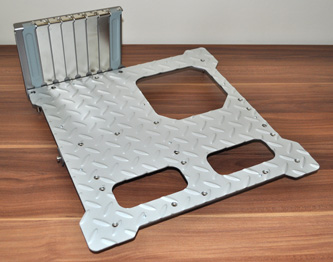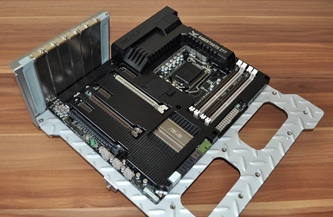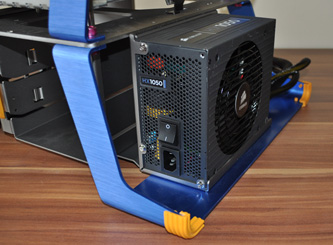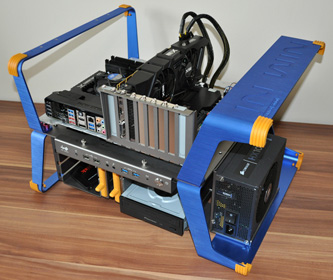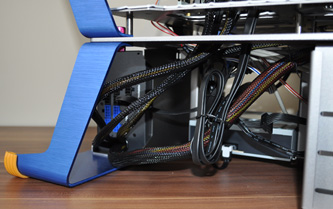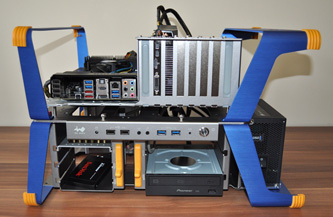Pros and Cons
The XFrame offers plenty that's good, but there are a couple of shortcomings. The lack of 2.5in drive bays was an obvious concern, and the XFrame doesn't provide any fan mounts, either. You could argue that the open-air nature of the beast negates the need for additional fans, but for those who prefer more exotic builds, we'd liked to see an option to mount a radiator or two.
What we do have is an expansive, removable motherboard tray. Knowing that the XFrame measures a good 329mm x 518mm x 408mm in size, it's no surprise to find that the removable tray supports your choice of micro, standard and extended ATX motherboards.
Like the rest of the chassis, the aluminium tray feels extremely robust and the rugged aesthetics go well with our ASUS Sabertooth Z77 board. Eight expansion slots are attached to the side of the board providing plenty of room for multi-GPU configurations (it's a shame the slots aren't fitted with thumb screws, though) and there are three useful cutouts in the tray; one for CPU cooler installation, and two for cable management.
Of course, having an open-air chassis such as this makes the build process particularly easy. Individual components attach or slot-in to their respective slots, and there are plenty of ways to route cables.
Our high-end Corsair HX1050 power supply fits in with ease, as do the rest of our components; the aforementioned ASUS Sabertooth Z77 motherboard (with an i5-3570K processor), a Sapphire Radeon HD 7970 graphics card, a Pioneer DVD Writer and a 128GB SanDisk Extreme SSD.
As you might have guessed, there's practically no limitation in graphics-card size, and there's a good amount of room for a large CPU cooler should you choose to install one. The rail mechanism firmly secured our DVD writer, but it's a shame there's nowhere to mount our 2.5in SSD - we've left it hanging in the 3.5in bays.
On the whole, the XFrame is easy to work with - and fun, too - but we did run into a problem with the I/O panel. When attached to the blue handle bar - which is how the chassis ships - the USB 2.0 and front-panel audio connectors weren't long enough to pass underneath the tray to the motherboard connectors on the opposite side of the chassis. To get around the cable shortage, we repositioned the I/O panel to the side of the chassis as pictured above and below.
The big void behind the 5.25in drive cage is ideal for storing excess cable, and the gap between the chassis' central tray and the motherboard tray is an ideal avenue for routing cables to and fro various components.
Our finished build looks tidy enough and it's fun to have all of these high-end components in clear view, but the open-air design has obvious drawbacks. Potential theft is a problem - you wouldn't want to take one of these to your next LAN party, at least not if you value your SSDs - and when we came back to our build a couple of days later we couldn't help but notice the layer of dust that had formed on most of the components.
An open-air system such as this would need regular use to help limit the build-up of dust, but it still needs some care. Regular cleaning is an almost-certain requirement, and you'll want to keep drinks as far away as possible; the thick blue handle bar looks a tempting place for a cup of tea, but just don't do it.






